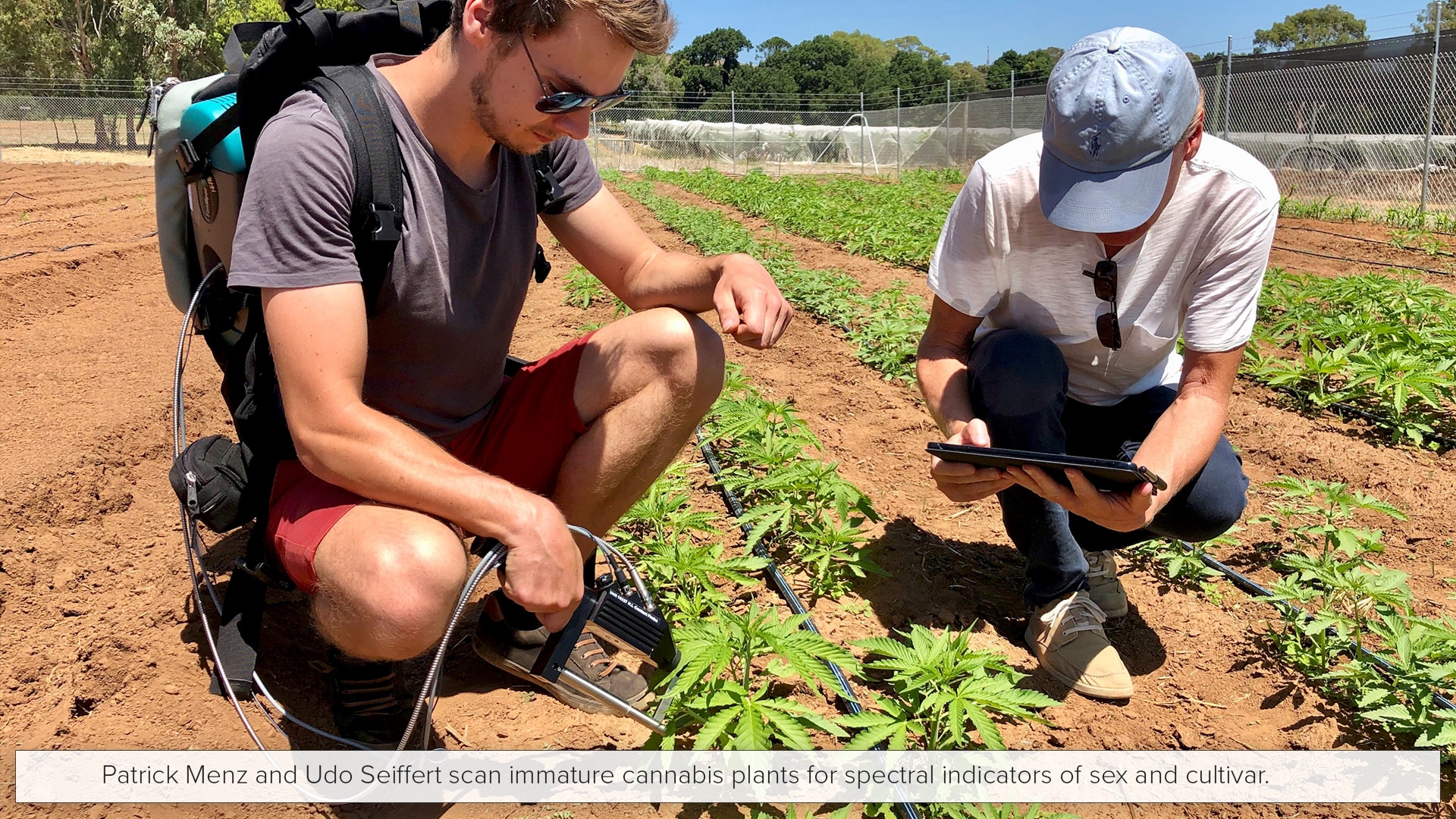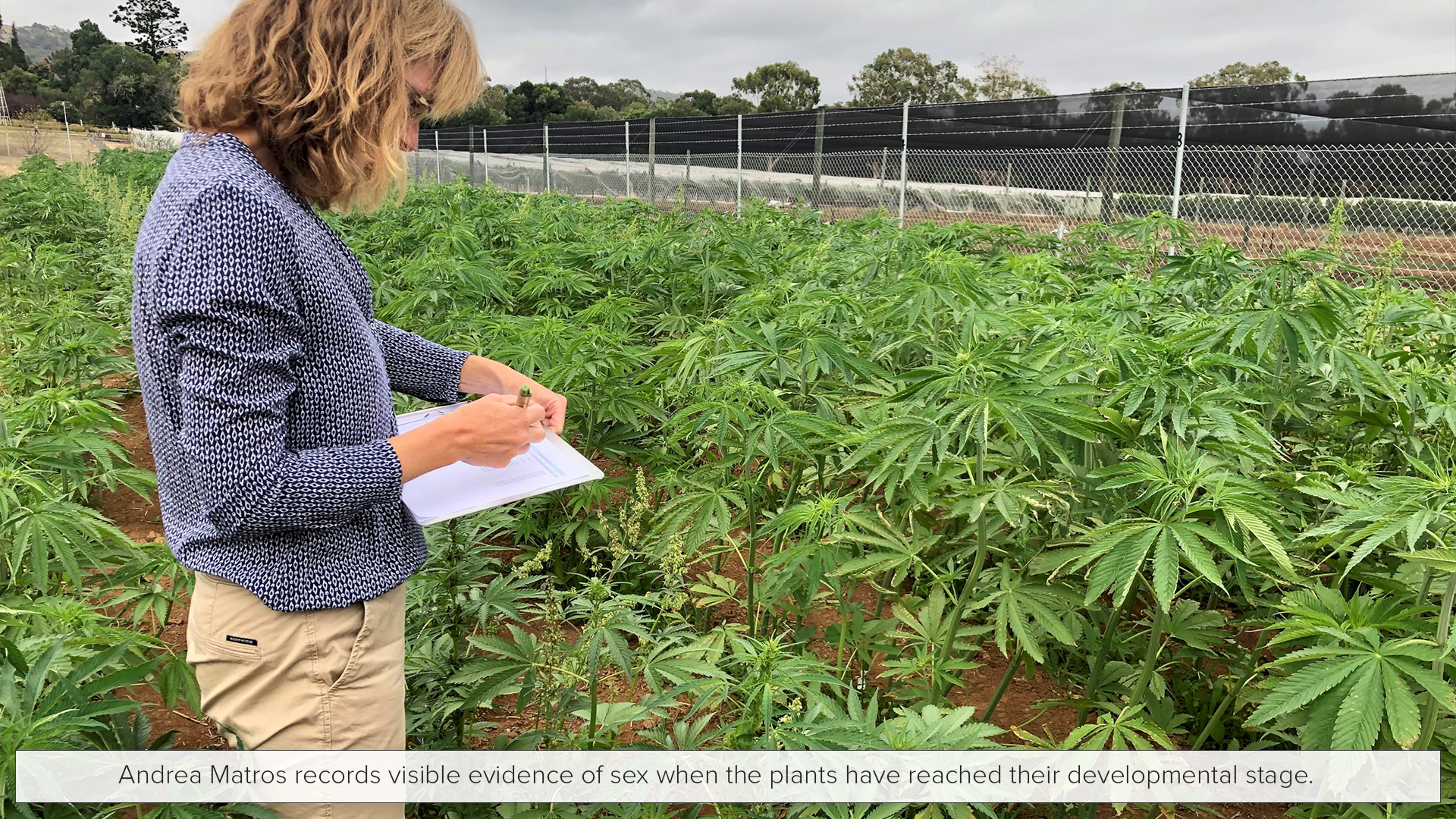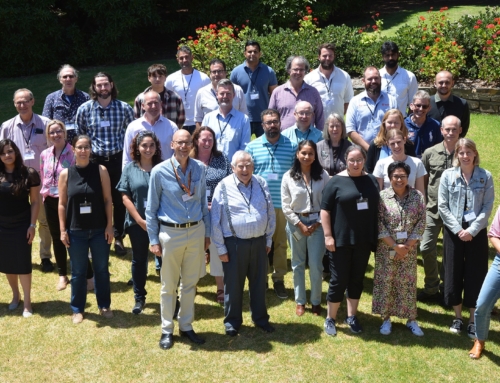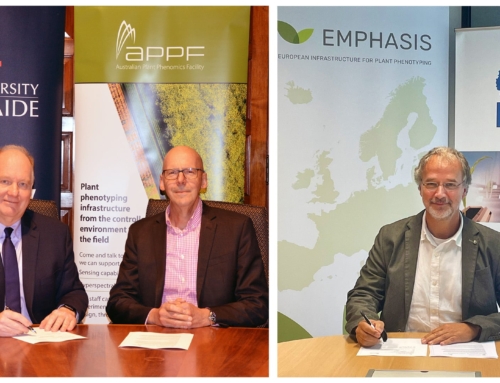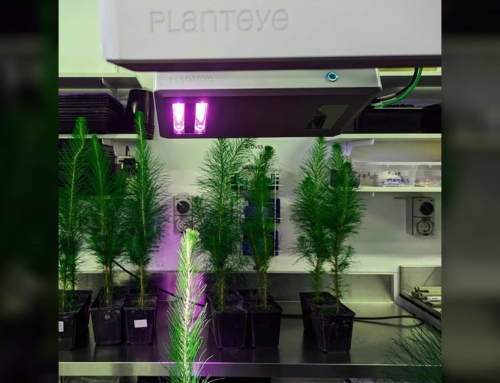Research linked to the hyperspectral scanning capabilities of The Plant Accelerator®, Adelaide node of the Australian Plant Phenomics Facility (APPF), has established the viability of using non-destructive scanning to determine the sex and cultivar of Cannabis sativa L. plants for fibre and seed production.
Regular APPF clients Dr Andrea Matros and Professor Udo Seiffert, now at German-based Compolytics, have shown that analysing the results of hyperspectral scans can reveal telltale signals of sex, cultivar and nutrition status in juvenile plants.
The pair have long taken advantage of the diversity of cropping projects and hyperspectral platforms at The Plant Accelerator® to conduct development testing of mathematical calibration models based on tailored machine learning for their handheld scanners.
In early 2020, Dr Matros was part of the Australian Research Council Centre of Excellence in Plant Energy Biology at the University of Adelaide School of Agriculture, Food and Wine’s Waite Campus, and Prof. Seiffert was with Biosystems Engineering, Fraunhofer IFF in Magdeburg, Germany.
At the same time, University of Adelaide’s Professor Rachel Burton was establishing Cannabis sativa cultivars in a secure field site on campus (now known as ‘the hemp cage’) for growth trials in collaboration with the Australian Hemp Seed Company.
The modern commercial hemp industry is relatively new and under-researched compared to other cropping sectors, with limited knowledge of cultivar performance and productivity under different growing conditions. There are also ongoing regulatory concerns around cultivars that produce high levels of the psychoactive cannabinoid ∆9-tetrahydrocannabinol (∆9-THC).
However, some cultivars are excellent sources of fibre and/or highly nutritious seeds, while producing very low levels of ∆9-THC.
Cannabis sativa is a dioecious species with separate male and female plants required for reproduction. The male plants are excellent pollinators but have much lower production value than females, meaning very few males are required in any given cropping area. The difficulty has been that male and female plants are almost impossible to distinguish before flowering, without destructive testing.
Professor Burton invited Dr Matros and Prof Seiffert to explore the application of hyperspectral scanning in determining sex, cultivar and nutritional status of the seedlings in her trials.
By conducting and analysing numerous scans of young plants, the team found that certain spectra could be used to provide error-free sex determination at the earliest stages of flowering (flower bud formation) and had 60 to 70 percent accuracy at earlier growth stages.
Applying machine learning algorithms to the spectral data allowed the researcher to differentiate between eight different cultivars in the trials and determine the nutrition status of plants raised under different controlled fertiliser regimes.
“The technology has great potential for advancing the hemp industry,” Dr Matros said.
“Being able to identify and remove male plants early will help improve productivity, while identifying cultivar and nutrition status will help improve variety selection and management in different growing environments.”
“Cultivar identification also has great potential for regulators to monitor the commercial industry and ensure that only the approved low-∆9-THC cultivars are being grown.”
Translating these results, among other agronomic challenges, from academic research to industrial applications is currently underway. At Compolytics, Dr Matros and Prof Seiffert are developing cost- and energy-efficient handheld multispectral devices by combining tailored optical spectroscopy with machine learned data analysis.
“This project is one example of the numerous applications we see for economical, handheld multispectral scanners in the cropping industry,” Professor Seiffert said.
“This technology is rapidly becoming more accessible and can help breeders, agronomists and farmers better manage their crops.”
The project highlights the potential of hyperspectral analysis for quickly non-destructively assessing plant attributes, development and performance – with significant time and cost savings in agriculture. APPF is actively engaged in this research space and welcomes further proposals.


